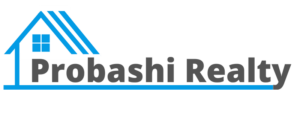
Here are more tips for managing your Canadian mortgage:
Leverage Prepayment Privileges: Many Canadian mortgages offer prepayment privileges that allow you to make extra payments on your principal without penalties. Take advantage of these options to pay down your mortgage faster and reduce interest costs.
Consider a Bi-weekly Payment Schedule: Instead of making monthly payments, opt for a bi-weekly schedule. This results in 26 half-payments a year, which is equivalent to 13 full monthly payments. Over time, this can significantly reduce your mortgage term.
Shop for the Best Mortgage Rate: Canadian mortgage rates can vary widely between lenders. Take the time to compare rates and terms from different lenders to secure the best deal for your situation.
Understand Mortgage Insurance: If your down payment is less than 20%, you’ll typically need mortgage insurance. Learn how mortgage insurance works, and consider strategies to eliminate it as soon as possible to save on premiums.
Budget for Closing Costs: Don’t forget to budget for closing costs when buying a home. These can include legal fees, land transfer taxes, and home inspection costs. Being prepared for these expenses can prevent financial surprises.
Monitor Your Credit Score: Your credit score plays a crucial role in securing a favorable mortgage rate. Regularly check your credit report and take steps to improve your score if necessary before applying for a mortgage.
Plan for Rate Increases: While interest rates may be low when you secure your mortgage, they can rise in the future. Ensure your budget can handle higher rates, and consider fixed-rate mortgages if you want more predictability.
Set Up an Emergency Fund: Unforeseen expenses can pop up during homeownership. Having an emergency fund in place can prevent you from relying on credit when unexpected costs arise.
Explore Mortgage Portability: If you plan to move before your mortgage term is up, look for a portable mortgage. This allows you to transfer your existing mortgage to a new property, potentially saving you penalties and fees.
Consult a Mortgage Broker: Mortgage brokers can help you navigate the complex world of mortgages and find the best deal tailored to your needs. They often have access to a wide range of lenders and can provide valuable insights.
The Canadian mortgage market is subject to regulatory changes and fluctuations in interest rates. Staying informed and regularly reviewing your mortgage strategy can help you make the most of your homeownership journey in Canada. Always consult with a financial advisor or mortgage professional for personalized advice.

Here are 15 tips for managing your Canadian mortgage:
- Accelerate Your Payments: Make accelerated bi-weekly or weekly payments instead of monthly. This can shave years off your mortgage term and save you significant interest.
- Round Up Payments: Round up your payments to the nearest hundred dollars or even add a little extra. These small additional amounts can make a big difference over time.
- Use a Mortgage Offset Account: Some Canadian lenders offer mortgage offset accounts, where your savings are used to reduce the interest on your mortgage. This can be a powerful way to save on interest costs.
- Apply Windfalls: Whenever you receive unexpected money like a tax refund or work bonus, consider putting it toward your mortgage principal to reduce the balance.
- Renegotiate Your Rate: Don’t be afraid to negotiate your mortgage rate, even after signing. If rates drop significantly, you can explore refinancing to get a better deal.
- Review Your Insurance: Mortgage life insurance from the lender can be costly. Compare it to other insurance options to ensure you’re getting the best coverage at the most reasonable price.
- Explore Government Programs: Research government programs such as the First-Time Home Buyer Incentive or Home Buyer’s Plan, which can help reduce your down payment or access your RRSP for a down payment.
- Set Up a Tax-Free Savings Account (TFSA): Consider using a TFSA to save for your mortgage down payment or to hold your emergency fund. The interest you earn is tax-free.
- Monitor Amortization Period: Over time, you can shorten your amortization period by making extra payments or increasing your regular payment amount, saving you money in the long run.
- Home Energy Efficiency Upgrades: Invest in energy-efficient upgrades for your home. Some provinces offer rebates and incentives that can help offset the costs.
- Consider a Collateral Charge Mortgage: This type of mortgage allows you to easily borrow more money against your property in the future without refinancing, but it may have associated fees. Evaluate if it suits your long-term financial plans.
- Consult a Financial Planner: A financial planner can help you create a comprehensive plan that considers your mortgage within the context of your overall financial goals.
- Utilize the Smith Manoeuvre: This advanced strategy involves borrowing against your home’s equity to invest in income-producing assets, potentially making your mortgage interest tax-deductible.
- Monitor Property Values: Keep an eye on local real estate trends. If your property value increases significantly, you may be able to access better mortgage terms or consider downsizing to reduce your mortgage.
- Diversify Your Investments: Instead of allocating all your resources to paying off your mortgage, consider diversifying your investments to potentially earn a higher return on your money, which can be used to accelerate mortgage payments.
Remember that mortgage management should align with your overall financial goals and risk tolerance. Consult with a financial advisor or mortgage specialist to determine which strategies are most suitable for your unique situation.

